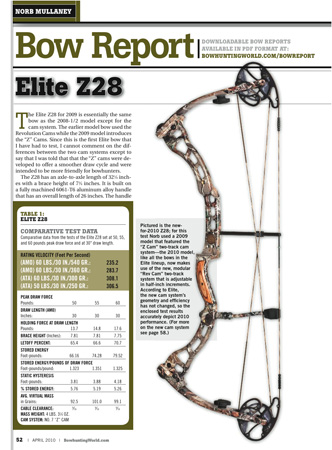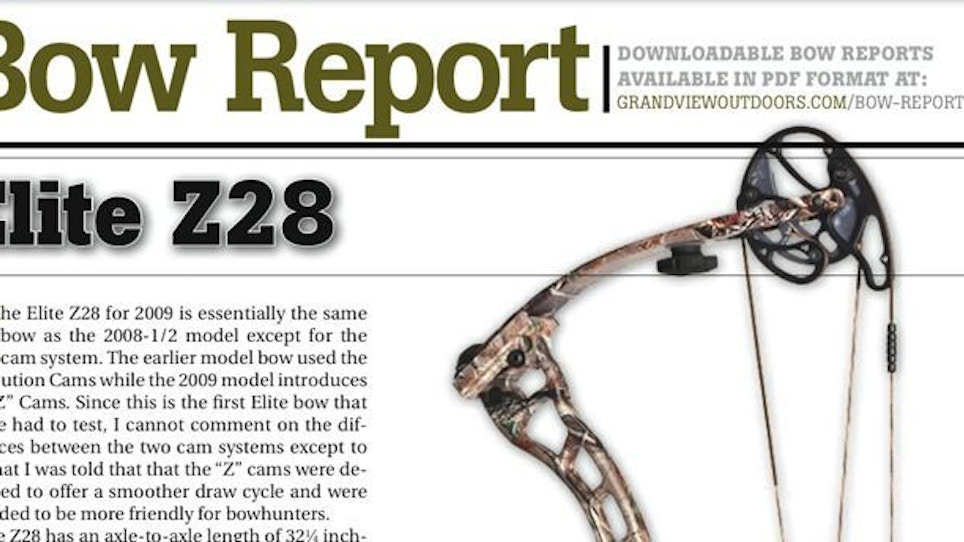Elite Z28 Bow Report
*Download the Bow Report*
 The Elite Z28 for 2009 is essentially the same bow as the 2008-1/2 model except for the cam system. The earlier model bow used the Revolution Cams while the 2009 model introduces the "Z" Cams. Since this is the first Elite bow that I have had to test, I cannot comment on the differences between the two cam systems except to say that I was told that that the "Z" cams were developed to offer a smoother draw cycle and were intended to be more friendly for bowhunters.
The Elite Z28 for 2009 is essentially the same bow as the 2008-1/2 model except for the cam system. The earlier model bow used the Revolution Cams while the 2009 model introduces the "Z" Cams. Since this is the first Elite bow that I have had to test, I cannot comment on the differences between the two cam systems except to say that I was told that that the "Z" cams were developed to offer a smoother draw cycle and were intended to be more friendly for bowhunters.
The Z28 has an axle-to-axle length of 32 1/4 inches with a brace height of 7 3/4 inches. It is built on a fully machined 6061-T6 aluminum alloy handle that has an overall length of 26 inches. The handle is reflexed 3 1/4 inches measured from the pivot point of the grip to the centerline of the limb pocket pivots. The grip is positioned on the vertical centerline of the handle, and the 6-inch sight window is cut 7/8 inch past centerline. The shelf is slightly dished rather than flat, so there is a slight upsweep as it extends outward from the base of the window.
The grip is formed from the base metal of the handle augmented by two laminated wooden side plates that are individually bolted in recessed pockets. It is a slender medium shape that I found quite comfortable.
The limb pockets are pivoted on the extreme ends of the risers, which are radiused to match the sockets machined into the pockets by cross-drilling through the flanges that extend over the riser ends. The flanges of the limb pockets are also drilled to accept four socket-head bolts that tap into the riser. These bolts are used the lock the limb pockets in position when adjusting draw weight. The limb adjustment bolts are threaded into steel cylinders that are set in lateral holes drilled into the riser ends. This arrangement allows the bolts to rotate with the limbs and maintain a perpendicular orientation with the backs of the limb butts as adjustment is made. This is not a new feature, but I feel that is always worth mentioning. *Read the rest of the report by downloading the PDF






